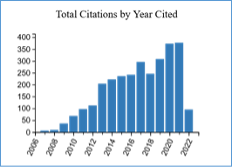 Gregg H. Gilbert, DDS, MBA, FAAHD, FACD, FICDIn a recently released peer-reviewed scientific publication the “National Dental Practice-Based Research Network” recently demonstrated sustained world-class scientific productivity for all the world to see.
Gregg H. Gilbert, DDS, MBA, FAAHD, FACD, FICDIn a recently released peer-reviewed scientific publication the “National Dental Practice-Based Research Network” recently demonstrated sustained world-class scientific productivity for all the world to see.
Led by UAB via its national Administrative and Resource Center, the network has regional and specialty nodes based in Alabama, Florida, Illinois, Minnesota, Oregon, New York and Texas. A Network Coordinating Center is based in Oregon. Since its inception in 2005, a total of 58 studies have been completed or are in data collection or development by the network. These studies have investigated a broad range of clinical topics using a wide variety of study designs. Peer-reviewed scientific journal articles from these studies have appeared in 62 different journal titles. Of the studies that have completed enrollment, a total of 70,665 patients and 19,827 practitioners were enrolled, as well as electronic records for an additional 790,493 patients in two data-only studies.
Scientists often measure the impact of their work by documenting the number of times their work is cited by other scientists, and sometimes by using the “impact factor” of the journal in which they publish a research article. The limitations of these measures led the National Institutes of Health (NIH) to develop in 2016 the “Relative Citation Ratio (RCR)” to quantify the influence of a research article. The key advantage is that the RCR is at the level of the individual article and importantly, is independent of the scientific field. To facilitate its public use, a NIH PubMed “iCite” site was established to facilitate easy calculations [https://icite.od.nih.gov/analysis].
The graphs below show results from an iCite analysis done in March 2022 of the network’s 167 peer-reviewed scientific publications from 2006-2021. With an average RCR of 1.40, the overall body of work significantly exceeded the average publication in the PubMed database. The network team also compared the percentile ranking of the 167 network publications to all of the publications in the PubMed database; nine of the 167 
 publications ranked above the 90th percentile and 15 articles ranked between the 80th and 90th percentiles. Dr. Gregg Gilbert, Distinguished Professor in the School of Dentistry and National Network Director, explained that “this is especially noteworthy because the National Dental Practice-Based Research Network intentionally balances its interest in communicating with a clinical audience (its main mission), with its desire to maintain a strong scientific credibility.” Consequently, the network decides on many occasions to target a particular scientific journal because it has a heavily clinical readership, even though that clinical journal’s “impact factor” is not as high as other target journals that would accept the manuscript for publication.
publications ranked above the 90th percentile and 15 articles ranked between the 80th and 90th percentiles. Dr. Gregg Gilbert, Distinguished Professor in the School of Dentistry and National Network Director, explained that “this is especially noteworthy because the National Dental Practice-Based Research Network intentionally balances its interest in communicating with a clinical audience (its main mission), with its desire to maintain a strong scientific credibility.” Consequently, the network decides on many occasions to target a particular scientific journal because it has a heavily clinical readership, even though that clinical journal’s “impact factor” is not as high as other target journals that would accept the manuscript for publication.
a Gilbert GH, Fellows JL, Allareddy V, Cochran DL, Cunha-Cruz J, Gordan VV, McBurnie MA, Meyerowitz C, Mungia R, Rindal DB, National Dental PBRN Collaborative Group. Structure, Function, and Productivity from the National Dental Practice-Based Research Network. Journal of Clinical and Translational Science 2022; in press. doi: https://doi.org/10.1017/cts.2022.421